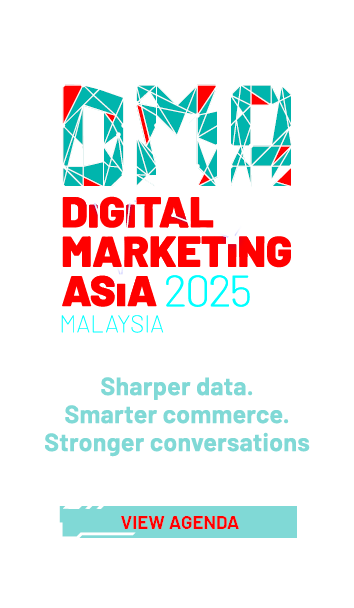



D2C: No silver bullet in communication, but creative simplicity is key
share on
As markets slowly start to open up, it is expected that certain trends that have been evident over the past year, may perish in the new one.
But with consumer expectations shifting, and with the rise of eCommerce, direct-to-consumer (D2C) marketing seems to be an area here to stay, according to panellists at a recent closed-door event, “The Last Metre”, hosted by MARKETING-INTERACTIVE in partnership with GrabAds.
According to a blog post on J.P Morgan, along with the shifting of consumer habits, three major factors have contributed to the growth of D2C marketing. These are:
• The rise of social media as a credible marketing channel: The rise of social media marketing, and now social selling, has enabled the targeted advertising of consumers, allowing start-up D2C brands to leapfrog into public consciousness through viral marketing campaigns, albeit with increasingly challenging consumer data protection rules to navigate.
• Advanced analytics (including those offered by marketplaces): Advanced analytics have helped enable D2C brands to adopt dynamic “just-in-time” inventory models, lower their working capital needs across the cycle, and leverage payments data to drive product and strategic decision-making in real time.
• Advancement in cloud-based capabilities and “outsourcing platforms”: These platforms have enabled the emergence of “supply chain as a service” across the product life cycle, helping reduce upfront capital investments and middle and back-office requirements, but potentially eroding unit margins at scale.
Looking to be an integral part of the ecosystem is mobility player Grab, which aims to facilitate the direct-to-consumer relationship by making the path to the connection shorter.
Dave Yang, head of direct sales organisation at GrabAds, explained that Grab sees itself as an important enabler of the D2C ecosystem because of the myriad of capabilities it has within its app.
Today, simply going online is no longer enough given the crowded online space. Brands need to stand out and be discovered to really succeed in selling. Moreover, their entire O2O ecosystem needs to come together to ensure a seamless experience, explained Yang.
For example, Grab recently partnered with famous Japanese retail brand DON DON DONKI (DONKI) in Singapore to offer consumers a more convenient online and in-store shopping experience where consumers can shop and pay for DONKI products through GrabMart and GrabPay, and have scheduled or immediate delivery straight to their door.
To cater to new consumer expectations of ultra-fast door-to-door delivery, Grab will also serve as DONKI’s preferred on-demand delivery partner in Southeast Asia, and also offer its cashless payment service across DONKI’s retail stores.
The two companies also plan to explore initiatives to better engage consumers online and offline. For example, DONKI can tap on Grab’s Merchant Discovery feature, which will enable it to push promotions to Grab users who are nearby to draw them to its stores.
In Singapore, Grab and DONKI are launching a joint campaign to encourage fans to explore this new GrabMart shopping experience. Dedicated promo codes will be created to offer consumers discounts and free delivery.
Yang also added that with the rise of D2C, not many brands have figured out a full-proof plan for their communication strategies.
“There’s no silver bullet. What’s important is that brands are clear on the roles and attributes that they place on the respective channels when mapping the customer journey. For example, traditional channels are great for building brand awareness and equity, while digital channels take personalisation to the next level by leveraging rich behavioural insights from data, and enabling last mile strategies to be optimised. While there are a number of paths we still need to continue on to understand and evolve, what we know for certain is that digital is only going to pick up speed, and will be a critical part of the marketing mix to enhance the direct-to-consumer brand experience,” he said.
While the term D2C is one which is still pretty loosely defined, Lyubomir Minkov, SVP of marketing at NTUC Enterprise Co-operative, said that for FairPrice Online it also means growing the Marketplace model. Allowing SMEs and niche grocery sellers to reach their base island-wide.
The marketplace model is a great way to experiment with new products and see what drives demand. “For instance, it allows us to offer exciting Japanese or Korean goods or showcase exclusive Italian wines. It provides variety to consumers, and serves as a great platform to test, learn and expand our product range.”
Nonetheless, what NTUC Enterprise gains most by having a direct-to-consumer relationship with clients are the data signals which help to understand customers’ needs and provide value added recommendations.
We start from use cases that are actionable and scalable; then work on stitching the data together to derive actionable insights.
"Serving an ad impression is not like having a relationship with a client. We focus on starting a long-term dialogue with our customers by providing personalised content across their lifecycle. The role of CRM and first party data is of utmost importance to deliver personalised recommendations and real-time shopping journeys. We want to help the consumer with both product discovery and shopping convenience.”
Simplicity in creativity
Meanwhile, Ajay Sohoni, vice-president of strategy, ASEAN and South Pacific Operating Unit, at The Coca-Cola Company, said that with the shift to buying online, there has also been a shift in the ad creative assets needed; and today simplicity in messaging plays a huge role.
“There has been a revolution within the ad creative space where our creative agencies went from producing one amazing 30-second TV spot to hundreds of five-second copies,” he said.
“From a supply chain perspective, they were just not geared well enough to make that happen. So today, we are partnering up with a lot of our creative agencies to find out what is the new creative model.”
He also added that while purchase patterns might have shifted online, it is important for marketers to know which mediums work best for the type of messaging they are looking for.
“For most markets in Southeast Asia, TV is still a big medium for storytelling. We needed to figure out what message we wanted to have on which platform and make sure we don’t just burden digital marketing with messaging it is not fit for,” he said.
We are starting to realise that digital is not always a good substitute for everything TV used to do, so we assign rightful roles.

Adding to Sohoni’s comments, Minkov mentioned that simple and clear campaigns work best with the dwindling attention span of consumers. There is no agreed methodology to assess the right level of creativity. Yet marketers can focus on engagement metrics to track performance and tailor Ad copy.
He also said that the FairPrice marketing team likes occasionally to take a more light-hearted approach and pepper its social posts with a playful touch.
Recently, NTUC FairPrice put a hilarious spin on outfits worn by local celebrities to the local Star Awards, an awards ceremony hosted by Mediacorp for its Chinese TV and radio programmes.
In a Facebook and Instagram post, FairPrice compared the outfits of three celebrities to similar food and beverages such as a raspberry dessert, doughnuts, and a local drink, iced teh (or tea). The post is also accompanied with the text: “If only there’s a category for most deliciously dressed. Here are our top few picks; who do you think would win?”
During the launch of Apple’s new iPhone 12, NTUC FairPrice also used the hashtag #NotiPhone12 to promote its range of apples with a link to its eCommerce site. On its imagery, it highlighted: “Costs less, tastes better.”
“Simple and easy to understand ad copy with clear call to action is the key to high engagement” Minkov said.
Related articles:
Grab competitor Ryde eyes premium LUXE service
Grab to go public in US via merger valued at nearly US$40bn
Humans and aliens collide in Grab Indonesia's space-themed Ramadan ad
share on
Free newsletter
Get the daily lowdown on Asia's top marketing stories.
We break down the big and messy topics of the day so you're updated on the most important developments in Asia's marketing development – for free.
subscribe now open in new window